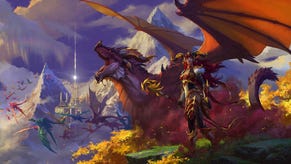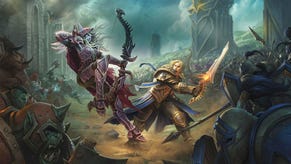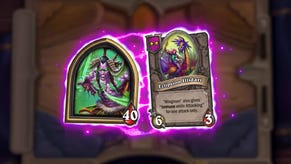Hearthstone: Having Fun with Control Priest and Jade Golem Druid Decks
And why building your own Hearthstone decks can be highly rewarding.
This article first appeared on USgamer, a partner publication of VG247. Some content, such as this article, has been migrated to VG247 for posterity after USgamer's closure - but it has not been edited or further vetted by the VG247 team.
During the festive season, I was lucky enough to find myself with a lot of spare gaming time on my hands. Some of that was spent revisiting Diablo III: Reaper of Souls – Ultimate Evil Edition on PS4, which I thoroughly enjoyed playing again for the first time in a year and a half. Another game that soaked up a copious amount of my gaming hours was Hearthstone.
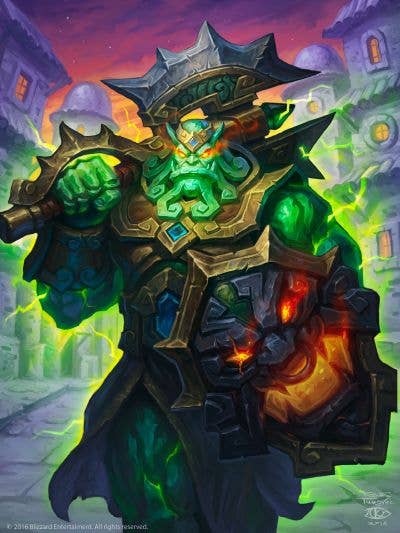
I've spent a ton of time playing Blizzard's outstanding card-based game, but I haven't been playing the game regularly over the past few months, apart from retooling my Standard decks to accommodate new cards from the latest Mean Streets of Gadgetzan expansion. My lack of recent Hearthstone engagement is simply due to the sheer volume of new games that were released over the latter stages of last year, and I fell out of the habit of booting it up every night to complete the daily quest that the game gives you. A handy practice that has enabled me to amass enough in-game gold to ensure that I haven't needed to spend any money on buying new card packs since the very first expansion, Goblins and Gnomes. Yessiree Bob. Hearthstone really is free-to-play if you're willing to invest some time into it.
I got back into the swing of things playing my Priest control deck. I love the playstyle of Priest control, but the archetype has been really weak for months. Fortunately, a number of cards from the Mean Streets of Gadgetzan have given it a buff, and I was pleased to find myself winning more than I was losing. A card that I repeatedly found very useful was the one-mana Pint-Size Potion spell, which gives all enemy minions -3 attack for the duration of your turn. When combined with Shadow Word: Horror, a four-mana spell that destroys all minions with two or less attack, it can prove quite devastating. I also combo-ed it a number of times with Cabal Shadow Priest – whose Battlecry enables you to take control of an enemy minion with two or less attack – to steal key late-game minions from my opponents, including Ysera, and Sylvanas Windrunner.

Other new cards that proved quite entertaining were Mana Geode and Kabal Talonpriest. The former is a 2/3 minion that summons a 2/2 crystal whenever it's healed, while the latter is a low-cost 3/4 minion whose Battlecry gives another minion +3 health. While not excessively powerful, they nevertheless helped establish a strong early board presence (especially when used with moderately high-threat cards like Northshire Cleric, and Priest of the Feast) as I built up card advantage with minions like Museum Curator and Northshire Cleric, and spells such as Thoughtsteal.
Sure, this Priest control deck isn't powerful enough to truly tear up the rankings, but it is really good fun to play – and that's what I ultimately play Hearthstone for. I love playing and designing quirky decks with interesting combos and synergies, rather than just copying the latest flavor-of-the-month meta-deck.
It was with that in mind that I approached designing a new Druid deck. My old Druid C'Thun deck was fun to play, but I also have a Rogue C'Thun deck which is a lot stronger, so I decided to dump the Druid version and instead concentrate on building a deck around the new Jade Golem cards. These summon a Jade Golem minion that increases in size by 1/1 each time you cast one, and if you play your cards right, you can end up being able to summon some really huge minions. To that end, I started out using all four Jade Golem cards available to the Druid – Jade Idol, Jade Blossom, Jade Spirit, and Jade Behemoth. The first is a Choose One card, enabling you to either summon a Jade Golem, or copy three versions of the card into your deck. The second grants you an empty mana crystal as well as summoning a Jade Golem, while the latter two are 2/3 and 3/6 (with taunt) creatures respectively, whose Battlecry also summon a Jade Golem.

An ideal addition to the deck would be the legendary 5/3 minion, Aya Blackpaw whose Battlecry and Deathrattle summon a Jade Golem. However, I don't have her as of yet, so instead I used two other legendaries, Brann Bronzebeard (Your Battlecries trigger twice), and Fandral Staghelm (Your Choose One cards have both effects combined). Both are very powerful cards, and if left on the board can enable you to quickly garner a huge advantage.
Since the deck takes its time to get going, I added in some damage spells such as Living Roots, Wrath, and Swipe to help take down early game threats, as well as a variety of Choose One spells and minions, including Druid of the Saber, Power of the Wild, and Feral Rage. Finally, Raven Idol (ideal for fishing for solutions when you run into trouble), Nourish (for card advantage), Azure Drake, and Ancient of War rounded things out.
If you're thinking this is an oddball combination of cards, you're right. I arrived at this decklisting through a lot of trial and error. Early iterations were awful, and I experimented with a lot of cards, initially losing far more than I won, but slowly tweaking it until it was fairly competitive in the current metagame. Even now, it's still not the most powerful deck around, but it is highly entertaining to play, which was my goal. What I particularly like about it is that the deck has a surprising amount of flexibility and utility. The wide variety of Choose One cards give you plenty of options to help deal with different situations, and there are a number of high-threat minions that the opponent has to deal with pretty much immediately to avoid giving up a potential advantage.
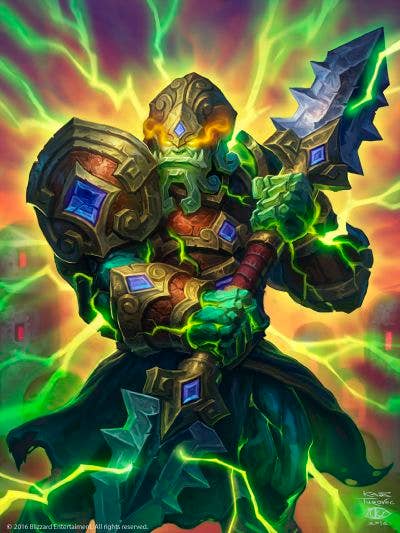
I'm not necessarily advocating that you play this deck – what this piece is ultimately about is how entertaining and rewarding making decks can be. I think Hearthstone is one of the best games around: It’s so easy to pick up and play, yet offers an astonishing breadth and depth of strategy. To me, making decks is part of that fun. Pick a theme, or cards you want to build around, and just start playing your creation. When you lose, take a note of what you might have needed to avoid defeat, and tweak your deck accordingly. Not necessarily every game – you need to run a number of games to really be able to evaluate cards properly – but you'll definitely notice patterns emerging the more you playtest your deck. Perhaps you've picked too many "powerful" cards for your deck, and are simply unable to cast them before being overrun by the enemy. If so, look at your mana curve and choose similar, but cheaper spells that you'll be able to cast earlier.
Another important thing is to consider what you have in your hand when you lose: Were there any "dead" cards that just weren't useful to you? If so, perhaps you might want to swap them for something else. What's your win condition, and how quickly can you get there? Look for cards with good synergies that help you reach your desired endgame state. That might mean using a lot of small, cheap minions that can buff one another for a rush deck, incorporating some big "finishers" like powerful legendaries for control decks, or even card-drawing spells and minions so that you can win through card advantage.
The really good thing about making your own decks is that you end up with something built around your own playstyle that fits the design goals you set for yourself. Not only that, but the process of building your own decks makes you a better player. It helps you become more familiar with cards and their synergies, what can work, and what doesn’t work, and the more you practice your deck, the more effective you'll become with it. It does require some patience – I lost a TON of games as I put together my Druid Jade Golem deck – and sometimes a deck just might not be viable, but when you do start winning, it feels incredibly rewarding knowing that it's all your own work.


